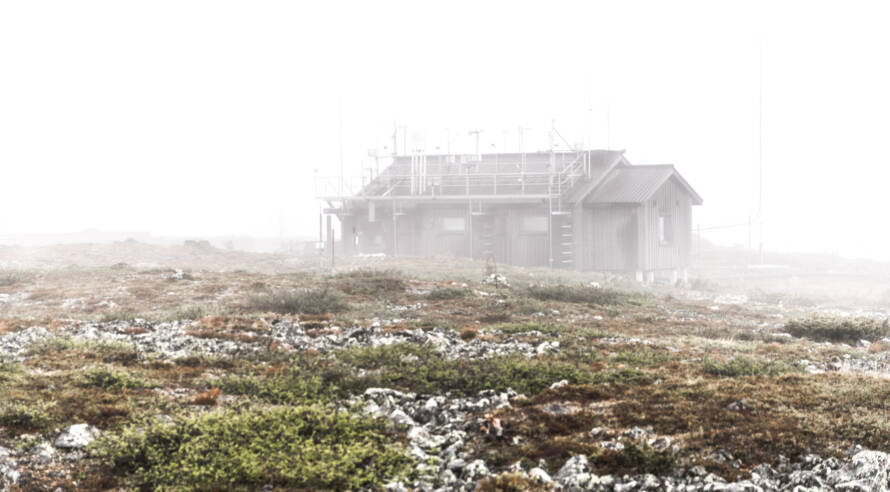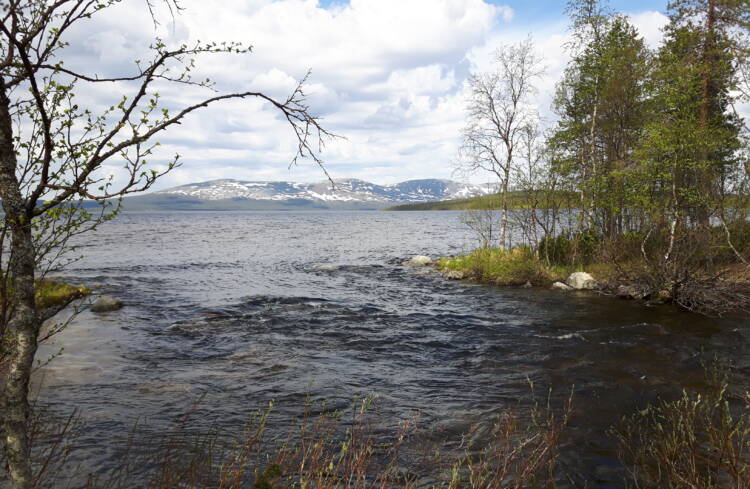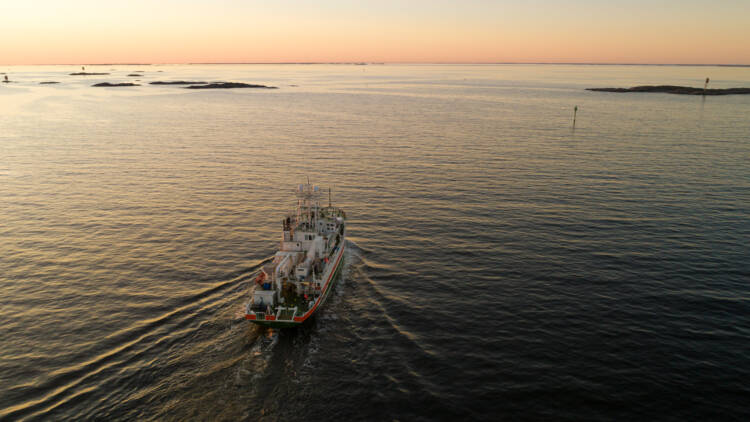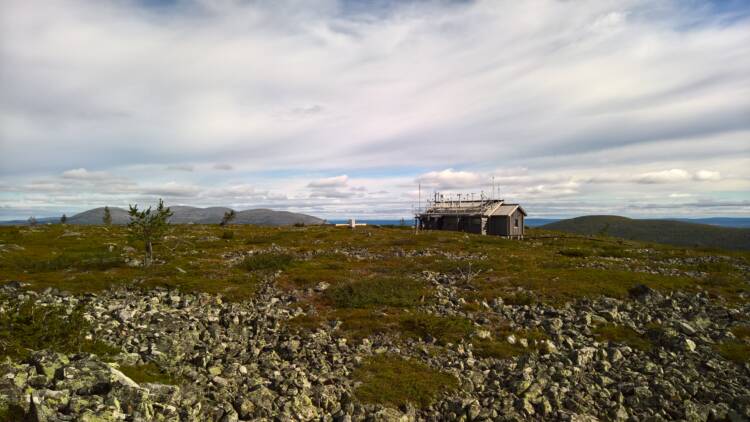Ecosystem process monitoring
Through various biological, physical, and chemical monitoring methods, information is obtained about both the condition of ecosystems and the complex processes occurring within them.

Content coming soon.
Tällä sivulla:
Monitoring of ecosystems and ecosystem processes
The biosphere maintains complex and long-lasting physical, chemical, and biological processes in ecosystems. The processes also have complex interactions. Observing both nature’s own processes and man-made environmental effects require systematic research and monitoring of ecosystems and ecosystem processes.
Important phenomena to be monitored are the effects of air pollution and climate change, as well as changes in the biodiversity of ecosystems. Monitoring should be focused on selected representative research areas, where monitoring is done in a variety of ways. The versatile data can then be used in several projects.

In order to detect complex and interactive processes and their effects and changes, it is important to carry out intensive chemical, physical and biological monitoring, if possible, simultaneously and at the same location. Monitoring that produces this kind of information includes impact monitoring related to the Convention on Long-range Transboundary Air Pollution (UNECE CLRTAP). They include monitoring of the terrestrial environment and fresh surface waters (UNECE ICP Forests, UNECE ICP Integrated Monitoring, UNECE ICP Waters) and ecological impact monitoring related to the EU National Emission reduction Commitments Directive (NECD) in the aforementioned ecosystems. In the northern regions, research and monitoring is also carried out by the Arctic Council’s Arctic Monitoring and Assessment Program (AMAP). Ecosystem changes occur slowly and can only be detected with long-term monitoring that lasts for decades.
Institutes that participate in monitoring
- Natural Resources Institute Finland (Luke)
- Finnish Environment Institute (Syke)
- Finnish Meteorological Institute (FMI)
- Several universities
Water chemical and biological monitoring is also related to the monitoring obligations of the Water Framework Directive (WFD) and the Marine Strategy Framework Directive. Water chemical and biological monitoring and nutrient loading are monitored not only for directive obligations but also for national purposes and, in sea areas, for reporting to the Baltic Marine Environment Protection Commission (HELCOM). Monitoring and inventory data of land ecosystems (e.g. national forest inventory (VMI)) is also used for EU land use, land use change and forestry (LULUCF) reporting.

The Finnish long-term ecological and socio-ecological research network (LTER Finland) and intensive measurement stations play a significant role in monitoring ecosystem processes. The Finnish LTER network was founded in 2006 and there are 11 measuring stations in Finland where different ecosystem processes and the long-term effects of global pressures on hydrological, biological, and chemical parameters (including the carbon and nitrogen cycle) are measured in the same areas.
Finland’s research stations are part of international research infrastructures (ICOS, AnaEE, ACTRIS, eLTER), whose national activities are coordinated by the INAR RI research infrastructure at the University of Helsinki. Monitoring stations for ICP programs are also located partly in the same areas. The Pallas research station is a key measurement station in the work of AMAP (Arctic Monitoring and Assessment Programme/Arctic Counsil) and GAW (Global Atmosphere Watch/WMO).

Monitoring schemes on ecosystem processes
The name of the monitoring scheme, the coordinating organizations and the contact person are listed below. The name of the monitoring leads to a link to the monitoring’s own pages, if one is known.
Nutrient load calculations
- Forestry water pollution monitoring: Sakari Sarkkola, Sirpa Piirainen (Luke), Tuija Mattsson (Syke) https://www.luke.fi/fi/projektit/vesistokuormitus-seurantaverkko
- Nutrient loads to Baltic Sea: Pekka Kotilainen, Antti Räike (Syke) https://helcom.fi/action-areas/monitoring-and-assessment/
Environmental and air quality measurements of intensive stations
- EU (NECD) Monitoring of ecosystem impacts: Jussi Vuorenmaa (Syke), Liisa Ukonmaanaho (Luke), Juha-Pekka Tuovinen (IL) https://environment.ec.europa.eu/topics/air/reducing-emissions-air-pollutants/monitoring-ecosystem-impacts_en
- UNECE ICP Waters: Jussi Vuorenmaa (Syke)https://www.icp-waters.no/
- UNECE ICP Integrated Monitoring: Martin Forsius, Jussi Vuorenmaa (Syke), Liisa Ukonmaanaho (Luke), Katriina Kyllönen (IL) https://www.slu.se/en/Collaborative-Centres-and-Projects/integrated-monitoring/
- UNECE ICP Forest: Päivi Merilä (Luke)http://icp-forests.net/
Research infrastructures
- Atmosphere and ecosystem research infrastructure (INAR RI): Markku Kulmala, Anna Lintunen (University of Helsinki) https://www.helsinki.fi/en/inar
- INAR RI Ecosystems, LTER Finland, eLTER: Jaana Bäck (University of Helsinki), Martin Forsius (Syke) https://www.helsinki.fi/en/inar/inar-ri-eco-sys-tems https://www.helsinki.fi/en/networks/finnish-long-term-ecosystem-and-socio-ecological-research https://elter-ri.eu/
- Analysis and Experimentation on Ecosystems (AnaEE) Finland: Janne Rinne, Säde Virkki (Luke) https://anaee.fi/
- Finnish component of the Aerosol, Clouds and Trace Gases Reseach Infractructure (ACTRIS Finland): Tuukka Petäjä, Silja Häme (Helsingin yliopisto) ACTRIS Finland | University of Helsinki
- ICOS-Suomi (Integrated Carbon Observation System): Annalea Lohila (FMI) | ICOS Finland (icos-finland.fi)